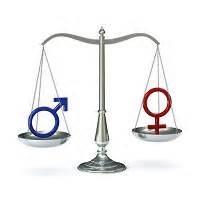55 Gender Stereotypes
Based on Research by Dr. Claude Steel. Psychology Science Minute written by Juanita N. Baker, Ph.D..
As we grow up, we pick up our culture’s stereotypes, even about ourselves. These attitudes can be damaging to us in many ways, unbeknownst to us.
Claude Steel and colleagues elicited gender stereotypes by asking questions of men and women before taking a test of visuospatial ability, typically a mechanical skill that seems similar to traditional work done more by males than females.
To subtly remind them about their gender, one group was asked beforehand “Do you live in a coed or single sex dorm?” Men did 30% better than women! When a second group was asked an innocuous question, men still did 20% better than women. However, when they were reminded that they were highly selected for their achievements by asking, “What made you decide to attend this elite private liberal arts school?” there were no differences! The supposed gender gap slammed shut. Few differences exist in actual intelligence or abilities in either race or gender, yet believing the stereotype that males perform better impairs females’ performance tremendously.
Girls and women buy into messages that they are less competent than boys and men. Our performance is often shaped by our expectations instead of our true ability. Before the next challenge, remember your capabilities!!
References:
Good, C., Aronson, J., & Inzlicht, M. (2003). Improving adolescents’ standardized test performance: An intervention to reduce the effects of stereotype threat. Journal of Applied Developmental Psychology, 24, 645-662.
Spencer, S. J., Steele, C. M., & Quinn, D. M. (1999). Stereotype threat and women’s math performance. Journal of Experimental Social Psychology, 35, 4-28.
Steele, C.M. (1997). A threat in the air: How stereotypes shape intellectual identity and performance. American Psychologist, 6, 613-629.





